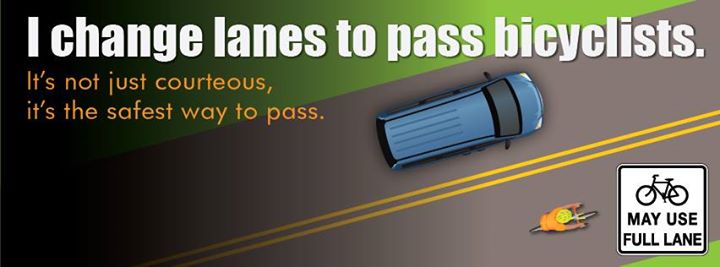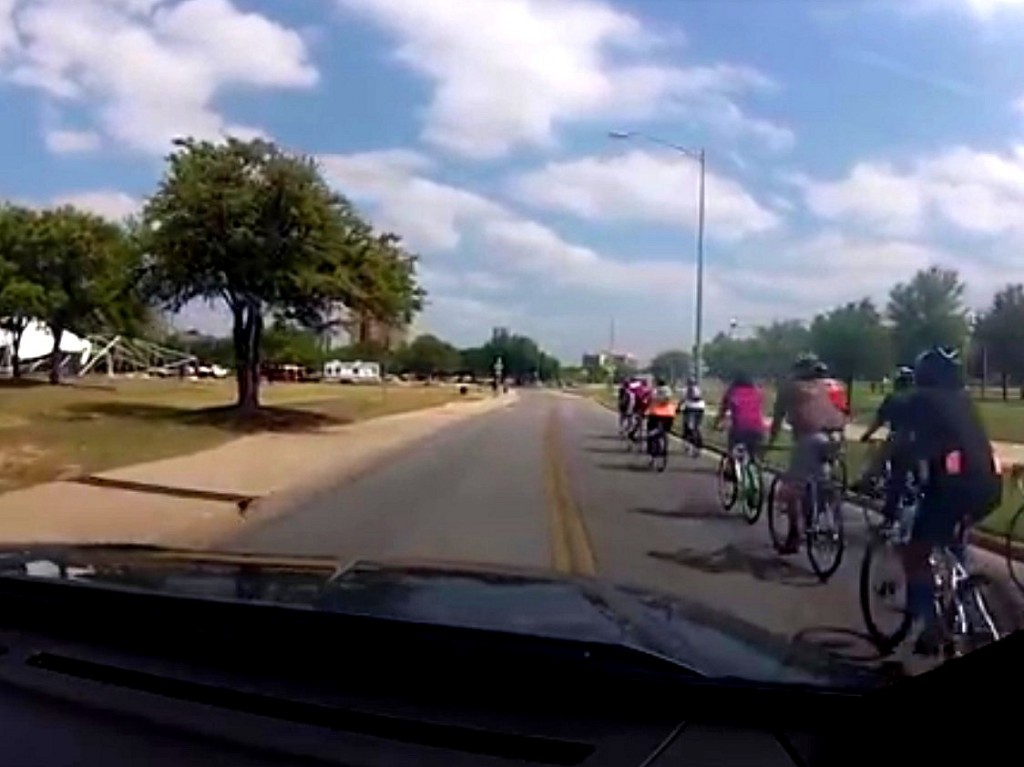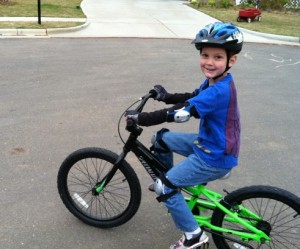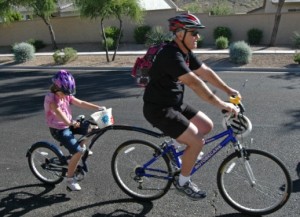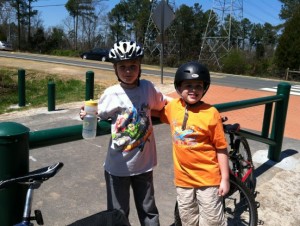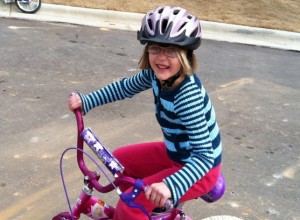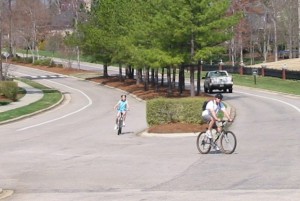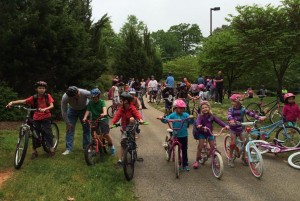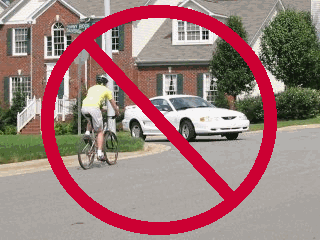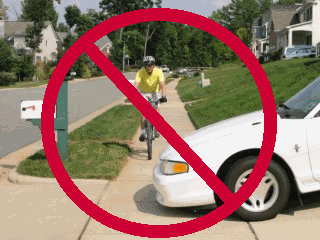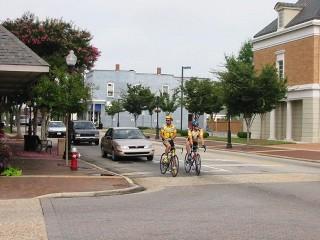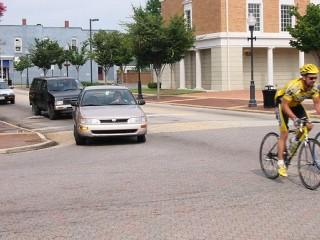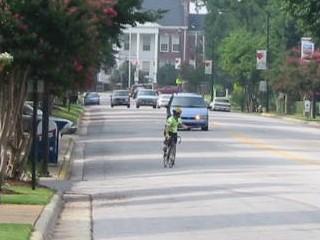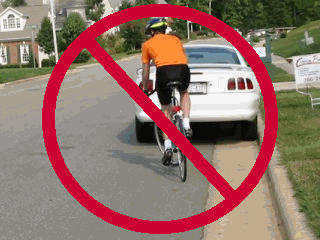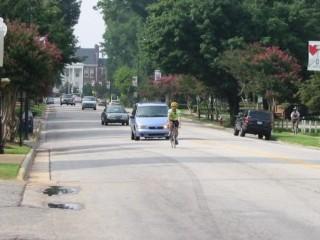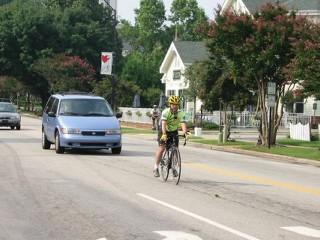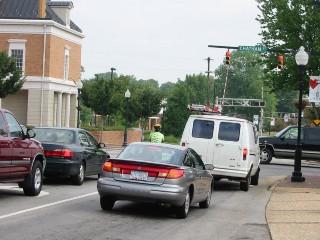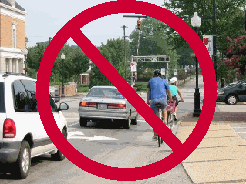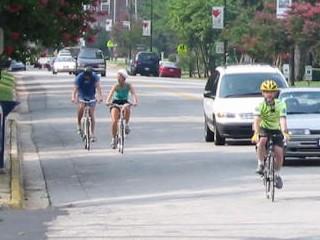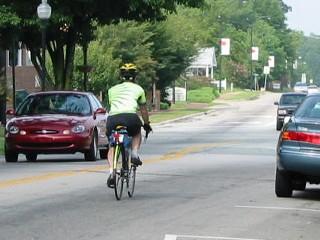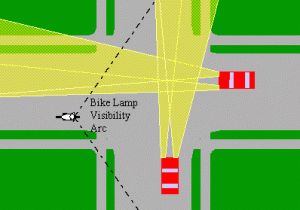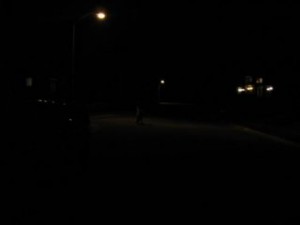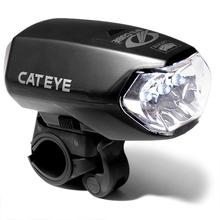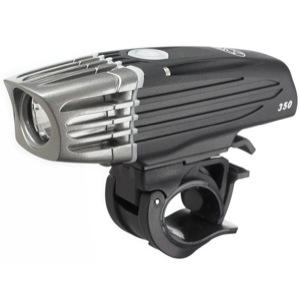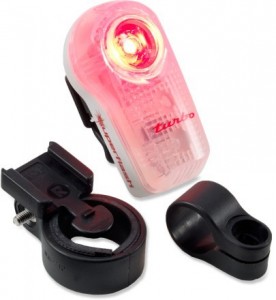The Traffic Bicycling for Transportation Professionals class is an all-day intensive workshop designed for transportation planners, traffic engineers, public safety advocates, and law enforcement officers. The information covered is a superset of the League of American Bicyclists Traffic Skills 101 class. League Cycling Instructors may announce and teach the class according to League guidelines for TS101 and award TS101 certificates. A future version of the class may be created to align with the ABEA CyclingSavvy curriculum for those interested in that program.
Curriculum Philosophy
The philosophy of the curriculum is to present transportation professionals with a comprehensive and consistent concept of operations for successful bicycling in traffic. The class starts with first principles of bicycle handling to establish the maneuvering characteristics and required operating space for bicycling. (This required operating space is much wider than many people realize; the students’ inevitable swerving when attempting to scan back for traffic drives this point home.) The class then presents human cognition principles and the basic rules of movement for traffic negotiation. These are practiced on quiet streets to reinforce the concepts. After this success, a typology and analysis of common bicycle crashes is presented to show how best bicycle driving practices address the causes of common crash types and minimize their likelihood. A variety of traffic challenges and facility types are discussed, with best bicycle driving practices identified for each. The class then rides in rush hour traffic on more challenging streets, followed by the optional TS101 test for LAB credit. The PowerPoint slide show provided for this class includes speaker notes to help instructors understand the important points to be covered in class.
This class does not cover facility design. This class teaches best bicycle driving practices to build students’ insight into real-world traffic negotiation issues so that they can evaluate facility design options on their own. Various facilities are presented as challenges to the students so they can determine how to best handle them, and later (outside of class) reflect on the impact facility design can have on bicycle drivers.
Organizing the Class
The first step in organizing the Traffic Bicycling class is to secure a classroom space and parking lot for drills at least a month in advance. The top level of a parking deck works well for the drills. City transportation officials or university staff may be able to provide these for you free of charge (networking helps here). Establish the room seating capacity and subtract 20% to determine the number of students you can accommodate (you need room for assistant instructors; at least one LCI per every five students is recommended).
Advertising the class to your target audience comes next. Work with local advocates and transportation professionals to get the word out. Be sure to advertise the class on the League web site per LAB requirements so the class will be insured. You may want to use an event ticketing web site like EventBrite to track registrations and collect payments. Advance payment is important to ensure people show up. Please consider donating proceeds to BikeWalk NC or splitting the proceeds.
As you get a better idea of the size of your class, invite the LCIs you will need for assistance (one per every 4-5 students) and print the class materials. Materials for the class are available online via the links below:
Print one per student:
Class Agenda (can be edited)
TS101 Certificate (use heavy paper)
Print one per instructor:
TS101 Handling Drills Diagrams
TS101 Avoidance Drills Diagrams
Materials not for printing:
Traffic Cycling PowerPoint Slide Show Presentation with speaker notes (can be edited)
PDF of Traffic Cycling slides with speaker notes (for reference, not presentation)
Alternative Materials
Sharing the Road with Bicyclists (Motorist Briefing)
A week or so prior to the class, send all students a link to the Traffic Bicycling class preparation page and recommend that everyone complete the homework tasks assigned on it. Multiple reminders may be helpful. Send them clear directions to the classroom location and any parking instructions.
Choose on-road routes that meet the LAB requirements (max 35 mph streets, various lane configurations), with the final road ride including areas with significant traffic, but not bumper to bumper congestion. Historic downtown streets are often preferable. Lots of left turns should be included. Make sure you ride the routes before choosing them, and make sure all LCI assistants have cycled them beforehand as well.
Running the Class
Time is very tight on this class. Start promptly, and do not go off on lengthy tangents. Do ask students questions frequently as part of the teaching process (Socratic method) and encourage discussion in order to keep them engaged. If students want to debate an issue, table it until after class. Run the parking lot drills as efficiently as possible, with multiple groups doing different drills in parallel with different instructors. Keep everybody moving except when an instructor is presenting the drill.
We find that running the parking lot drills in a time-efficient manner is the biggest challenge in this class. We recommend lining everybody up to do the ABC Quick Check, straight line and scan/signal drills as one group before breaking up into three separate groups to do the avoidance drills (quick stop, instant turn and rock dodge). We normally skip the avoidance weave to save time.
For the transportation professionals in this class, We emphasize the relationship between facility design and what they experience while executing the handling drills. In particular:
Straight line scan/look back: Invite them to think about how much they swerved while looking back, and what this implies for the necessary size of their safe operating envelope and shy distance to both overtaking traffic and the pavement edge. This is very important when considering sharable lane width and the sum of bike lane plus travel lane width.
Instant turn: We don’t push speed/performance to the transportation planners here, but instead talk about turn planning. The students will turn wider and use more space than they expect; invite them to consider the implications for minimum turn radii and path width/curb cut width at path intersections for bicycling.
We will also demonstrate door zone distance with a parked car at the end of the parking lot drill. It’s best to have a two door car with really wide doors available for this.
After the class, if students ask for a copy of the slides, you can send them a pdf copy. Discourage distribution of this to people who have not yet taken the class. The verbal and physical content is much greater than the visual content, so the slides do not do the class justice.
Thank you for helping to “teach the teachers” and make our state better for bicyclists!
